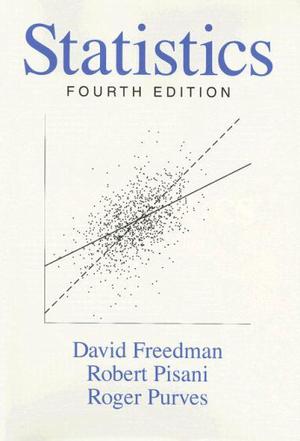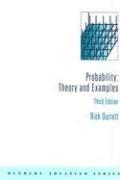-

Complex Analysis
A standard source of information of functions of one complex variable, this text has retained its wide popularity in this field by being consistently rigorous without becoming needlessly concerned with advanced or overspecialized material. Difficult points have been clarified, the book has been reviewed for accuracy, and notations and terminology have been modernized. Chapter 2, Complex Functions, features a brief section on the change of length and area under conformal mapping, and much of Chapter 8, Global-Analytic Functions, has been rewritten in order to introduce readers to the terminology of germs and sheaves while still emphasizing that classical concepts are the backbone of the theory. Chapter 4, Complex Integration, now includes a new and simpler proof of the general form of Cauchy's theorem. There is a short section on the Riemann zeta function, showing the use of residues in a more exciting situation than in the computation of definite integrals. -

Introduction to Probability Models, Tenth Edition
Ross's classic bestseller, Introduction to Probability Models, has been used extensively by professionals and as the primary text for a first undergraduate course in applied probability. It provides an introduction to elementary probability theory and stochastic processes, and shows how probability theory can be applied to the study of phenomena in fields such as engineering, computer science, management science, the physical and social sciences, and operations research. With the addition of several new sections relating to actuaries, this text is highly recommended by the Society of Actuaries. Ancillary list: Instructor's Manual - http://textbooks.elsevier.com/web/manuals.aspx?isbn=9780123743886 Student Solutions Manual - http://www.elsevierdirect.com/product.jsp?isbn=9780123756862#42 Sample Chapter, eBook - http://www.elsevierdirect.com/product.jsp?isbn=9780123756862 New to this Edition: 65% new chapter material including coverage of finite capacity queues, insurance risk models and Markov chains Contains compulsory material for new Exam 3 of the Society of Actuaries containing several sections in the new exams Updated data, and a list of commonly used notations and equations, a robust ancillary package, including a ISM, SSM, test bank, and companion website Includes SPSS PASW Modeler and SAS JMP software packages which are widely used in the field Hallmark features: Superior writing style Excellent exercises and examples covering the wide breadth of coverage of probability topics Real-world applications in engineering, science, business and economics -

Statistics
Renowned for its clear prose and no-nonsense emphasis on core concepts, Statistics covers fundamentals using real examples to illustrate the techniques. The Fourth Edition has been carefully revised and updated to reflect current data. -

泛函分析
he present book is based on lectures given by the author at the University of Tokyo during the past ten years. It is intended as a textbook to be studied by students on their own or to be used in a course on Functional Analysis, i.e., the general theory of linear operators infunction spaces together with salient features of its application to diverse fields of modem and classical analysis. Necessary prerequisites for the reading of this book are summarized,with or without proof, in Chapter 0 under titles: Set Theory, Topological Spaces, Measure Spaces and Linear Spaces. Then, starting with the chapter on Semi-norms, a general theory of Banach and Hilbert spaces is presented in connection with the theory of generalized functions of S. L. SOBOLEV and L. SCHWARTZ. While the book is primarily addressed to graduate students, it is hoped it might prove useful to research mathematicians, both pure and applied. The reader may pass, e.g., fromChapter IX (Analytical Theory. of Semi-groups) directly to Chapter XIII (Ergodic Theory and Diffusion Theory) and to Chapter XIV (Integration of the Equation of Evolution). Such materials as "Weak Topologies and Duality in Locally Convex Spaces" and "Nuclear Spaces" are presented in the form of the appendices to Chapter V and Chapter X,respectively. These might be skipped for the first reading by those who are interested rather in the application of linear operators. -

Real Analysis
An in-depth look at real analysis and its applications-now expanded and revised. This new edition of the widely used analysis book continues to cover real analysis in greater detail and at a more advanced level than most books on the subject. Encompassing several subjects that underlie much of modern analysis, the book focuses on measure and integration theory, point set topology, and the basics of functional analysis. It illustrates the use of the general theories and introduces readers to other branches of analysis such as Fourier analysis, distribution theory, and probability theory. This edition is bolstered in content as well as in scope-extending its usefulness to students outside of pure analysis as well as those interested in dynamical systems. The numerous exercises, extensive bibliography, and review chapter on sets and metric spaces make Real Analysis: Modern Techniques and Their Applications, Second Edition invaluable for students in graduate-level analysis courses. New features include: * Revised material on the n-dimensional Lebesgue integral. * An improved proof of Tychonoff's theorem. * Expanded material on Fourier analysis. * A newly written chapter devoted to distributions and differential equations. * Updated material on Hausdorff dimension and fractal dimension. -

Probability
Modern and measure-theory based, this text is intended primarily for the first-year graduate course in probability theory. The book focuses attention on examples while developing theory. There is an emphasis on results that can be used to solve problems in the hopes that those who apply probability to work will find this a useful reference.